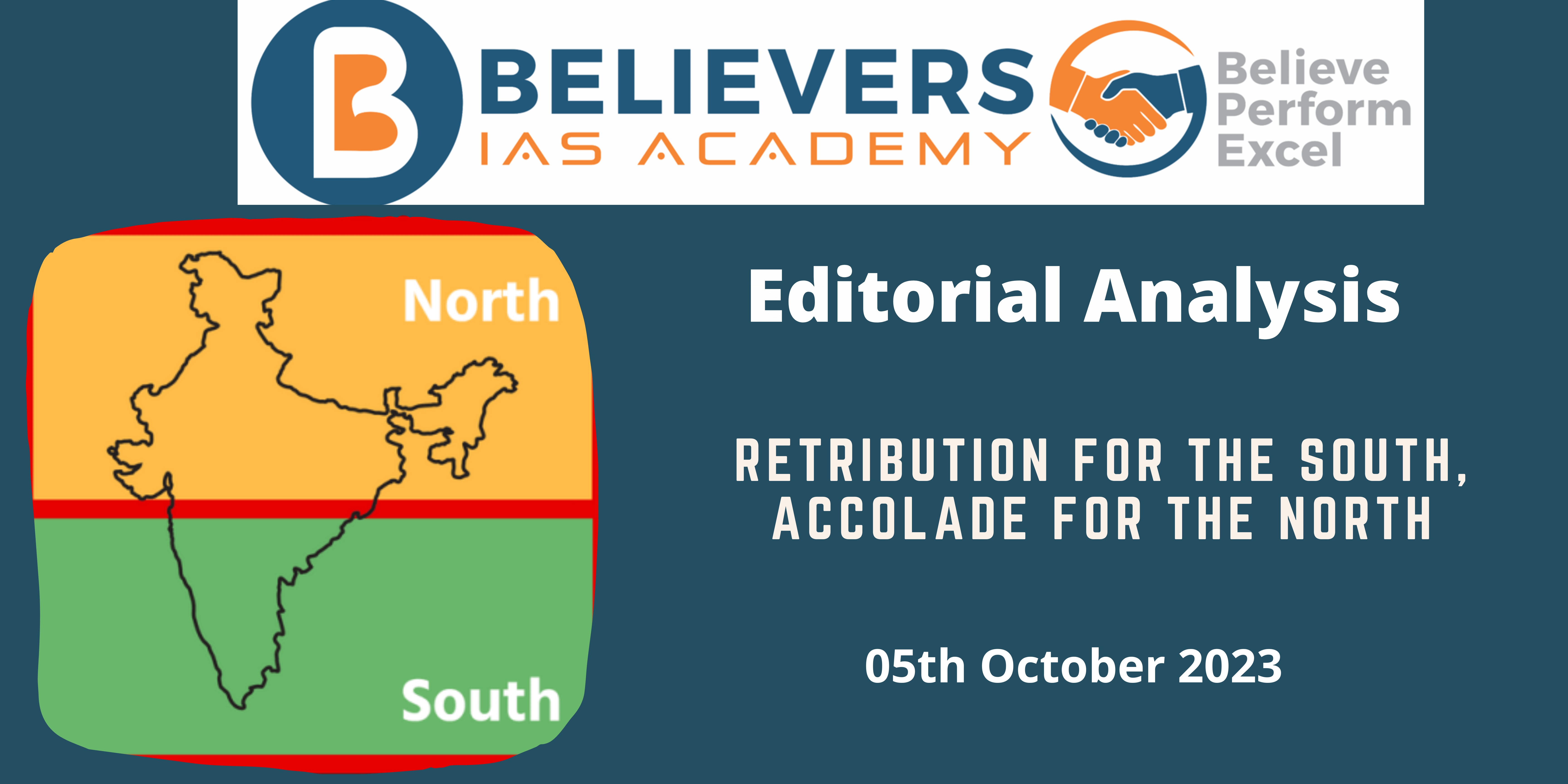Retribution for the south, accolade for the north
Context:
In India’s federal democracy, the relative size of a state’s population holds substantial political and economic importance. The southern states, buoyed by strong linguistic identities and regional renaissances, have made remarkable strides across various development sectors. A striking contrast emerges when comparing the southern states to their northern counterparts in terms of population control. In the intricate web of Indian federal politics, changes in population dynamics wield a long-lasting influence over the political and economic landscape.
Relevance:
GS – 02 (Federalism, Co-operative Federalism)
Prelims:
Federalism, President’s rule, Governor’s Role, Supreme Court, Parliament, The Inter-State Council, The Finance Commission, The NITI Aayog
Mains Question:
How do changes in population dynamics, particularly the differing growth rates between southern and northern states, impact political representation and fiscal transfers in India’s federal system, and what are the implications for state development policies? (250 words)
Dimensions of the Article:
- Delimitation and Political Representation
- Equating Constituencies and ‘One Person, One Vote’
- Population Control and Social Change
- Role of Population in Fiscal Transfers
- Per Capita Income and State Revenue
Delimitation and Political Representation:
- Article 81 of the Indian Constitution mandates equal-sized Lok Sabha constituencies based on population. This standard, frozen based on the 1971 Census through the 42nd Amendment Act of 1976, remained unchanged until the 84th Amendment Act in 2001, extending it until after the 2026 Census.
- The population growth disparities between non-Hindi speaking southern states and Hindi-speaking northern states have significant implications. The southern states could lose 23 seats while the northern states gain 37 if constituencies were to be equalized today based on 2023 projections.
Equating Constituencies and ‘One Person, One Vote’:
- Equating constituencies solely by population size may not be essential due to the intricacies of India’s ‘First-Past-the-Post’ election system.
- In this system, winners can secure victory with a fraction of the total votes or registered voters. This raises questions about the true meaning of ‘one person, one vote.’ Hence, the approach of equalizing constituencies purely by population size may not necessarily serve its intended purpose.
Population Control and Social Change:
- Population control success in southern states is not solely attributed to family planning programs but also to the societal change driven by local leaders. Penalizing these states with reduced political representation can disincentivize population control and social change policies, while incentivizing other states to overlook these vital issues.
- Maintaining the 1971 seat distribution freeze until population stabilizes in all states emerges as a pragmatic solution.
Role of Population in Fiscal Transfers:
- Every five years, the Union government appoints a Finance Commission to determine the share of each state in the Union’s tax revenue. Population and per capita income are crucial factors in this distribution formula.
- Population size represents the demand for public expenditure. Historically, the weight assigned to population size in the formula has decreased. However, the recent shift to consider the current population in the formula signifies a stark departure.
- This change has led to reduced financial transfers to southern states as a consequence of their population control efforts.
Per Capita Income and State Revenue:
- Per capita income is used as a proxy for a state’s ability to generate its own revenue. States with higher per capita income receive a lower share of Union tax revenue. This can disproportionately favor states with higher population sizes but lower per capita income.
- As a result, the share of southern states in Union government tax revenue has declined, while northern states have seen an increase.
Way Forward:
To address these challenges and ensure a more equitable and just system:
- Reevaluation of Delimitation: A thoughtful reevaluation of constituency delimitation methods is warranted, considering not only population but also the intricacies of the ‘First-Past-the-Post’ election system.
- Balancing Fiscal Transfers: Fiscal transfer formulas should be revisited to strike a fair balance between population size, per capita income, and the demand for public expenditure.
- Incentivizing Population Control: Encouraging population control efforts should remain a priority, and policies should be designed to reward states that effectively implement these measures.



